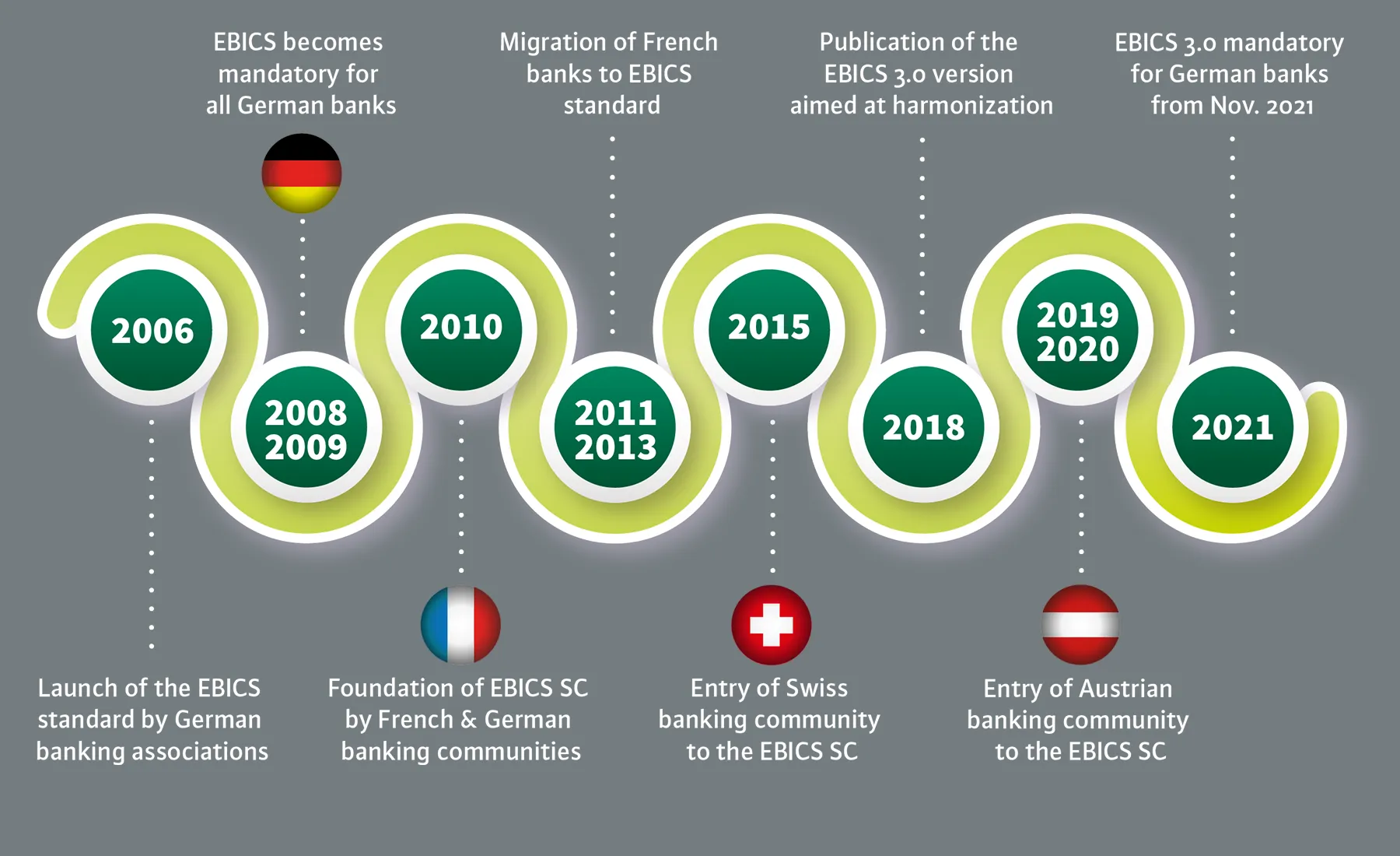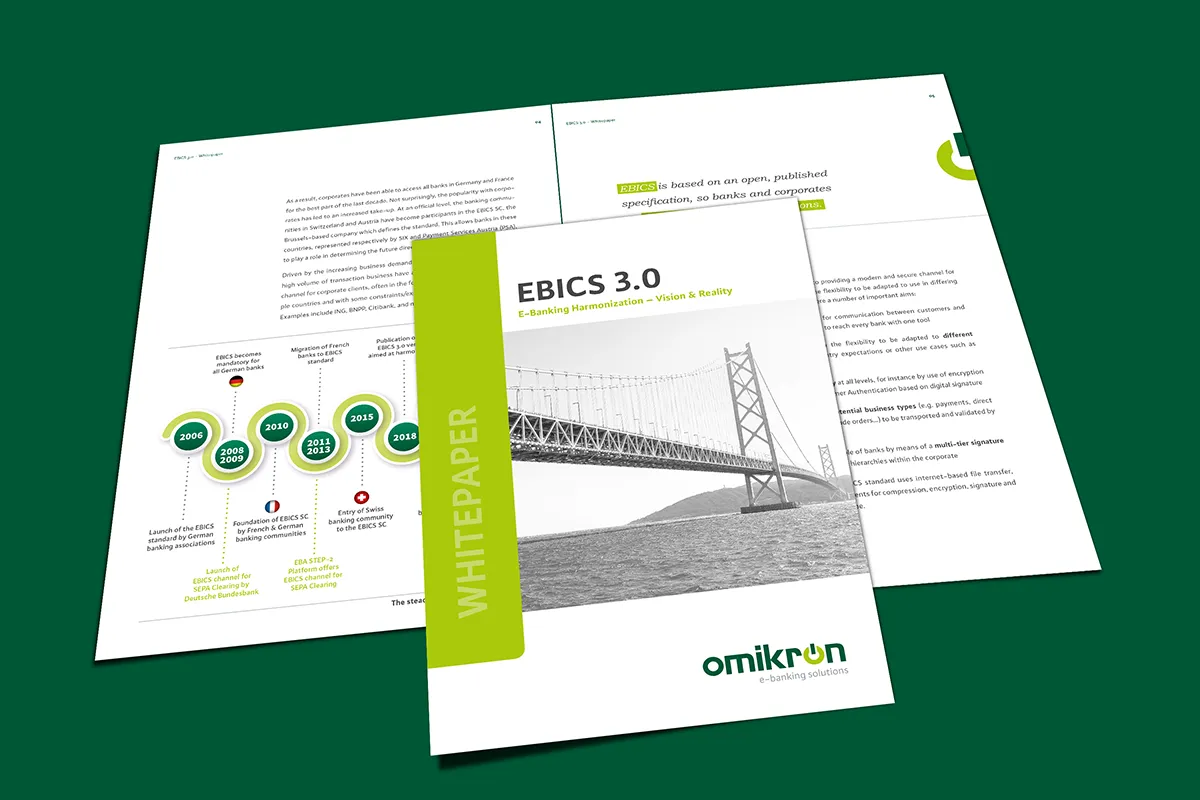E-Banking Harmonization – Vision and Reality
EBICS was designed as an open standard with an emphasis on security, high performance and flexibility to support multiple transaction types. As a result, corporates have for many years been able to access all their banks via one standard, secure channel. Banks also benefit from the cost-efficiencies of a channel which is an international standard and constantly maintained.

Standardization – overcoming the challenges
Harmonization is certainly positive, but there are hurdles to be overcome. Today, the original EBICS standard lives alongside a special “variant” for France, designed to allow easy migration from the French legacy standard. There are two main differences, both in key areas: the way in which the message contents are identified and the signature/authorization process.
EBICS 3.0 – One Harmonized Standard ?
Perhaps the most significant change within EBICS 3.0 is the way in which transaction types are recognized and validated. The current – mutually incompatible – models used in the standard and the French variant has been replaced by a new overriding framework, using Business Transaction Formats (BTF). These provide a level of flexibility to support diverse formats by using additional parameters which are required for each transaction type. This means that the definition “owners” (the country banking bodies) have extensive freedom to design the information needed for these definitions. This versatility however introduces new levels of complexity and creates special challenges for applications used in the international environment at banks and corporates, because they must reliably support the BTF variants of all involved parties.
Alongside this are changes aimed at harmonizing the exchange authentication keys and personal signatures, by settling on the use of X.509 certificates. However, again there remain differences, for instance in how these are handled and the validity of the certificates. The consequence is that solution providers must ensure support for both options within the application.
Making the Right Choices
For full cross-border compliance, it is necessary to ensure ongoing compatibility between the different solutions on the market, across different countries. Omikron’s solutions are designed to meet these expectations and to be adapted easily to support any changes or additions to the underlying national specifications.





